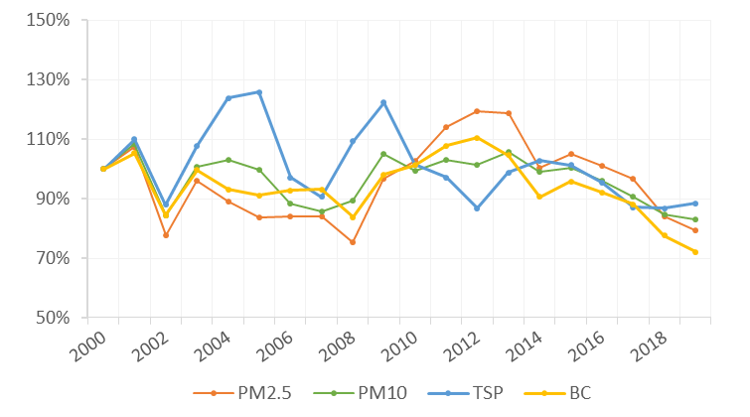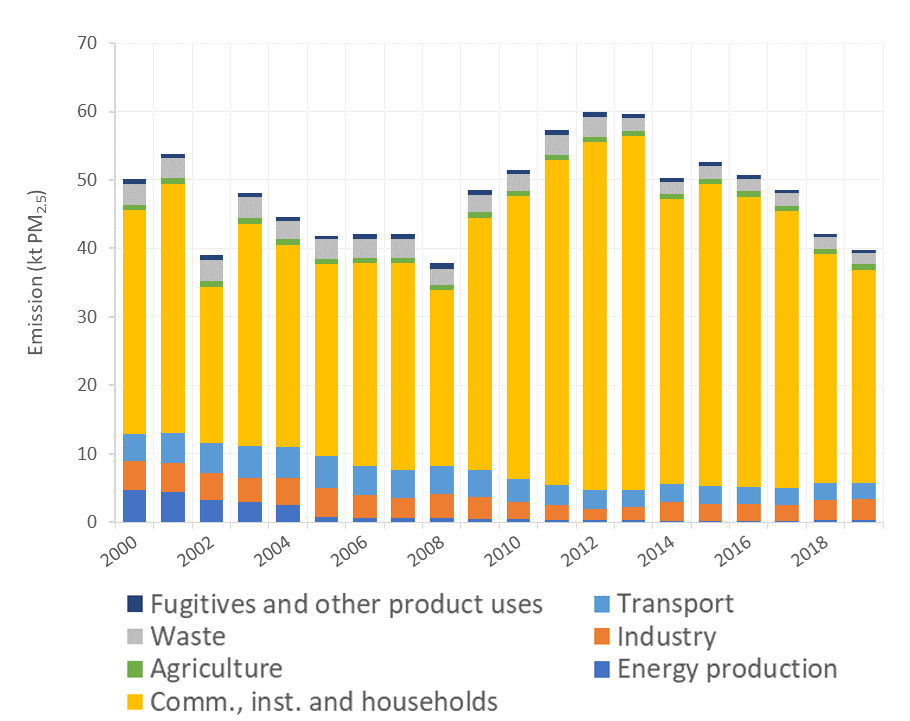Particles
Particulate matter (PM) is the general term used to describe solid particles and liquid droplets found in the air. The composition and size of these airborne particles and droplets vary widely. Four types of particles should be reported in the inventory: TSP (total suspended material, i.e. the mass concentration of particulate matter), PM10 (particles that have aerodynamic diameters less than or equal to 10 micrometers, approximately equal to one-seventh the diameter of human hair), PM2.5 (the subset of PM10 particles that have aerodynamic diameters less than or equal to 2.5 micrometers), and BC (black carbon).
Small aerosol particles, especially black carbon, play an important role in the formation of smog. In winter, in addition to sulfur-dioxide, one of the characteristic components of smog during the heating period is carbon black, which is formed during the imperfect combustion of carbonaceous fuels. Greater particles are emitted in the air directly, mainly from residential heating and construction sites of buildings and roads.
Particulate matter contains microscopic solids or liquid droplets that are so small that they can be inhaled and cause serious health problems. Some particles less than 10 micrometers in diameter can get deep into your lungs and some may even get into your bloodstream. Of these, particles less than 2.5 micrometers in diameter, also known as fine particles or PM2.5, pose the greatest risk to health, as other risky substances (heavy metals, bacteria, carcinogens) can bind on their surface.
Figures below show the trend of aerosol particle emissions between 1990 and 2019. There is no definite trend for particulates, emissions vary from year to year. However, except for TSP, a decreasing trend can be observed from 2015.

Figure 1. Changes in particulate emissions compared to the level of 2000
Graphs show the dominant role of non-industrial combustion in particulate emissions. Non-industrial combustion contains the usage of fuels during residential and agrological heating.

Figure 2. PM10 emissions between 2000 and 2019 (in a sectorial splitting different from the official 4 sectors)
Mainly TSP and PM10 (greater particles) are emitted from industrial processes. The most important industrial sources are the construction sites of buildings and road: in 2019, 31% of TSP emissions and 14% of PM10 emissions came from construction activities. In some years, even the half of the emissions came from this industrial sector. Because there is not much room to reduce emissions through the development of abatement technologies, the inter-annual variability in PM10 emissions is mainly due to the volatile performance of this sector. As the constructions can last for several years, the impact of the 2008 crisis has been delayed in this sector, while recent years have seen an increase in construction activity and emissions.

Figure 3. PM2.5 emissions between 2000 and 2019 (in a sectorial splitting different from the official 4 sectors)
Particle emissions also occur during waste management, although this is not significant relative to total national emissions. In 2019 3% of PM10 emissions, 4% of PM2.5 emissions and 6% of black carbon emissions originated from the waste sector. Within the waste sector, open burning of waste is primarily responsible for particulate emissions. Open burning of waste category includes the open-air incineration of garden waste, orchard and vine pruning and slash from forestry operations. Due to international regulations and domestic law emissions from open burning show a significantly decreasing trend.




